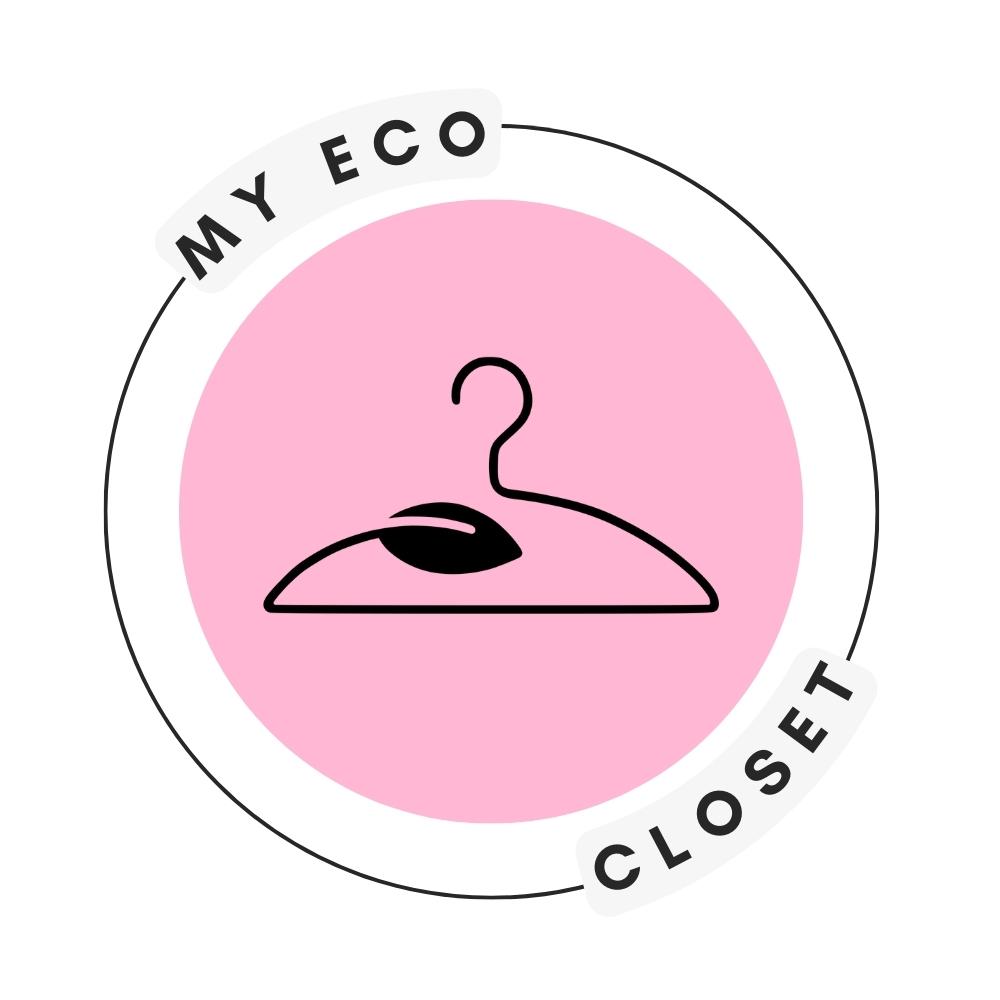Did you know that the clothes we wear could be silently poisoning us and our planet? With millions of tons of clothing going to landfills each year, fast fashion has become a global issue. Not only does it contribute to environmental harm, but also poses serious threats to our health.
In this eye-opening guide, we will cover everything you need to know about toxic clothing materials used in fast fashion and beyond. Let’s explore how dangerous chemicals find their way into our closets today, with our selection of top 5 fabrics to avoid.

1. Polyester
Polyester is a widely used synthetic fiber derived from petroleum. It is often treated with chemicals like antimony and ethylene glycol, which can be harmful to human health.
Moreover, polyester underwear is shown to decrease male fertility. According to Dr. Shrey Srivastav, the fabric generates an electrostatic charge, which reduced sperm count in dogs after 24 months of wearing polyester underpants. The scrotal heating stress, in tandem with a cocktail of harmful chemicals, kills sperm cells and cause sub-fertility (sometimes, infertility).
Similar effects are observed in relation to female fertility. Polyester underwear triggered miscarriages and infertility in female dogs, according to a study conducted by the National Institute of Health.
What’s more, unlike natural fibers that allow the crotch area to “breathe”, polyester traps body heat. By this, it increases the absorption of toxic chemicals present in the fabric.
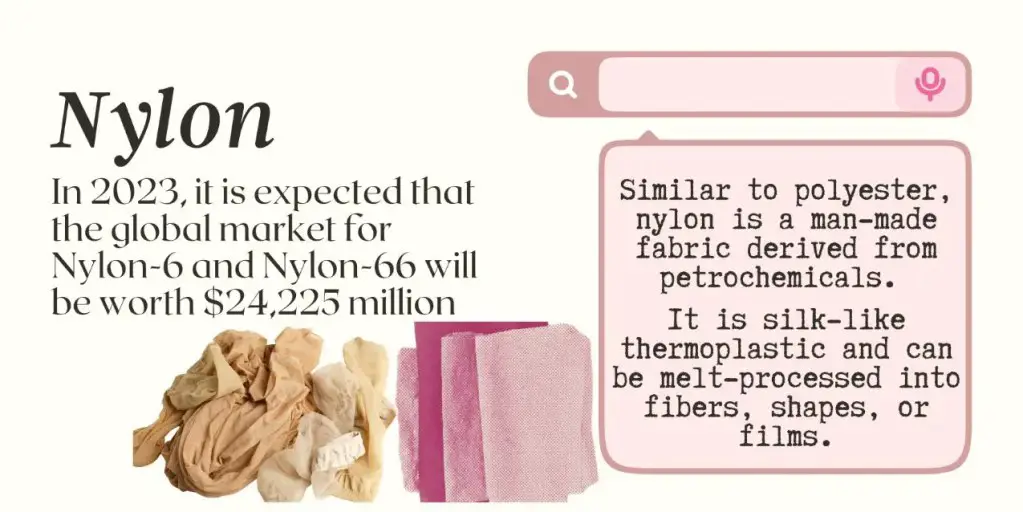
2. Nylon
The first-ever synthetic fiber, Nylon was introduced in 1939 as a low-cost alternative to silk. Sourced from toluene, it enabled the mass production of parachutes during World War II. In fact, Wallace Hume Carothers, a DuPont chemist, gets the credit for nylon and is regarded as the father of the synthetic textile industry.
At a glance, nylon seems like a convenient and stretchy material for women’s stockings and other items. However, the fabric poses many environmental and health hazards.
Made of petrochemicals, nylon production emits nitrous oxide, which is a powerful greenhouse gas. It also involves synthetic dyes and toxic solvents, as it’s sprayed with permanent chemical finishes to make the fabric soft, colorful, and stretchy.

3. Rayon, Also Known As Viscose
Do not let the plant-based status of this fabric fool you. Created in 1924, rayon is one of the first man-made textiles. Although it’s made of wood pulp, rayon undergoes chemical processing through carbon disulfide and sodium hydroxide. Therefore, it’s harmful to your health and the planet.
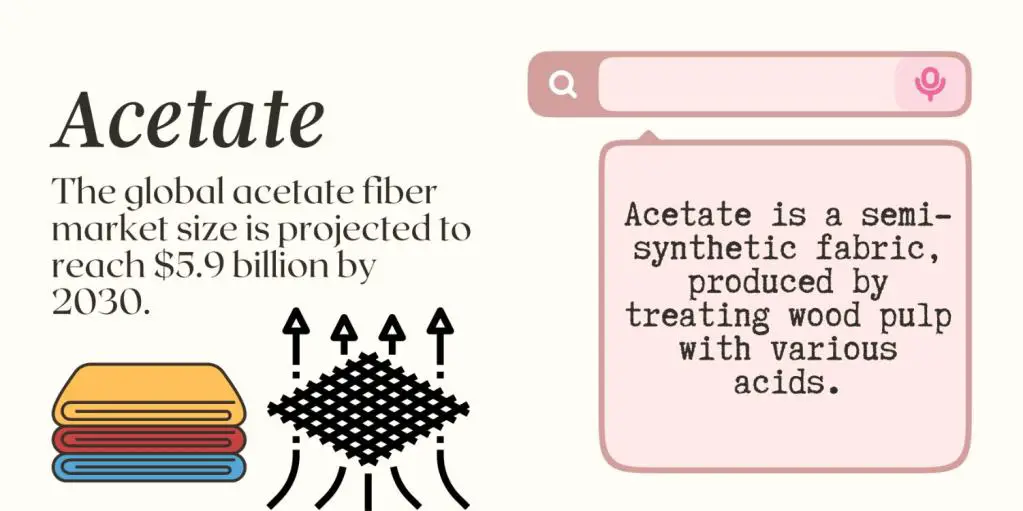
4. Acetate
Acetate is another fabric made of cellulose, derived from chemically-processed wood pulp. It is similar to rayon but is more prone to melting. It is also hydrophobic, meaning it repels water and must be dry-cleaned.
Acetate has an adverse impact on our health, as it’s made of fossil-based chemicals. It is processed with acetic acid, acetic anhydride, and acetone, which cause neurological issues, skin irritation, and nausea.
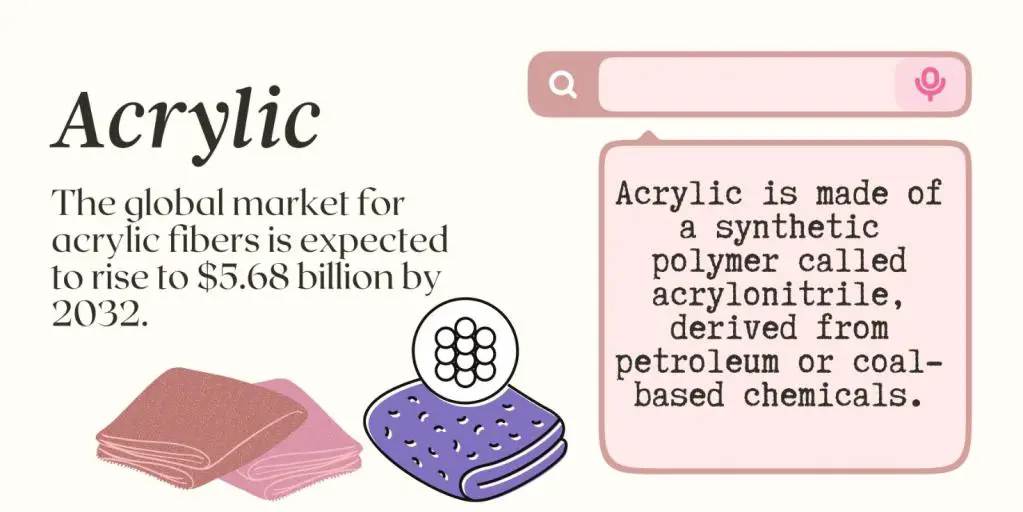
5. Acrylic
Acrylic, as well as modacrylic, became mainstream in 1950. Referred to as “wash-and-wear” fabrics, it served as a cheap substitute for wool, boasting shorter drying times and easier care.
Acrylic’s convenient properties sound too good to be true, and it’s for a reason. Since it’s highly inflammable, acrylic has to be sprayed with toxic flame retardants to minimize its chances of burning. These flame retardants damage our reproductive system and bioaccumulate, proven to be carcinogenic by studies done on lab animals.

How Do Toxins End Up in Our Clothes?
The fashion industry allows for many chemical-intensive processes, be it fiber production, dyeing, or finishing, which release harmful compounds into the environment. According to Earthday.org, clothing manufacturing involves the use of around 8000 synthetic chemicals.
Such artificial practices emit hazardous compounds, such as formaldehyde phthalates, azo dyes, as well as heavy metals such as lead and cadmium, into the air, water, and later, our closets.
[Fashion] may be cheap in terms of the financial cost, but very expensive when it comes to the environment and the cost of human life Sass Brown

Lack of Safety Regulations in The Fashion Industry
In 2021, multiple fast fashion brands had their clothes tested for toxic substances common in mass-produced clothing, resulting in a concerning discovery: 38 samples of clothing from AliExpress, Zaful, and Shein contained dangerously high levels of lead, phthalates, and PFAS (the so-called “forever chemicals”), with some samples even carrying 20 times the limit.
This may surprise many, however, it’s possible to suffer from lead exposure through clothing directly. Skin is the largest organ of the body, therefore, wearing toxic clothes can pose significant risks to our health, ranging from mild skin irritation to behavioral problems.
The industry, however, turns a blind eye to these concerns. It refuses to uphold safety regulations and instead, hides its deleterious environmental impacts. Fast fashion brands produce and discard clothes in unknown settings, which not only affects us, the consumers, but also the garment workers who produce our clothes.

Health Hazards Surrounding Toxic Clothing Materials
The chemicals in our clothes can result in a myriad of chronic diseases, especially if we are exposed to them for long periods of time.
For instance, PFAs or Perfluoroalkyl and poly-fluoroalkyl substances can cause fertility issues, organ damage, and cancer, as they get released into the environment and gather up in the water that we drink. Similarly, flame retardants contain chemicals that enter the bloodstream, which can cause neurotoxicity, infertility, and cancer over time.
In a recent case study published in the iMedPub Journals, researchers found that textile dyes may be highly toxic due to the presence of high heavy metal content, which often exceeds the recommended limits in clothing.
Hence, being aware of and avoiding toxic clothing materials can significantly reduce the potential health risks associated with their use, promoting a safer and healthier lifestyle.

Additional Hazards to Watch Out for
Azo Dyes
Azo dyes are synthetic dyes commonly used to color textiles. Some azo dyes can release aromatic amines, which are known to be carcinogenic and genotoxic once they break down.
Azo dyes can also transform into dangerous chemicals that are linked to health issues such as bladder cancer. Additionally, they can also cause skin irritation, triggering allergic reactions and chronic skin problems.
Heavy Metals
Some clothing materials may contain heavy metals like lead, cadmium, and mercury. These metals can be harmful when they come into contact with the skin or are ingested.
Formaldehyde
Have you noticed that new clothing smells a certain way? This is due to the presence of formaldehyde, which emits a certain chemical smell while granting textiles certain properties, such as smoothness, stain resistance, and more.
Giving clothes anti-wrinkling capacities, formaldehyde often reveals itself in synthetic textiles, causing headaches, nausea, and sore throat. While the substance makes our garments more practical, it often triggers skin irritation and contact dermatitis.
Environmental Impacts of Toxic Clothing Materials
If we look into it further, we may see that the negative impacts of fashion reach beyond our own health and have a significant influence on our ecosystem.
All of the chemicals mentioned above pose multiple threats to the environment. They contribute to water pollution when they leach into water bodies through manufacturing or when the clothes are washed resulting in a damaged aquatic ecosystem.
Furthermore, these clothing materials do not break down easily, accumulating in soil and plants, leading to long-term contamination and harm to terrestrial ecosystems.
When disposed of improperly, clothing containing these chemicals can end up in landfills, contributing to the release of toxic chemicals into the atmosphere, further polluting the environment and nearby communities.

Alternatives to Toxic Clothing Materials
As we learned there’s plenty of toxic substances and chemicals in our clothing but there are clearly safer and more sustainable options for us to choose from, not only for our own health but also the planet’s.
Let’s have a look at the alternatives and a few actions you can take today in order to make a change for the better:
Organic cotton
Organic cotton offers several benefits over conventional cotton production. It is produced without the use of any synthetic chemicals while minimizing water and soil pollution. The outcome? hypoallergenic and high quality cotton fibers, which are ideal for sensitive skin and for preserving the environment.
Organic Bamboo
Bamboo is a biodegradable and highly sustainable plant that doesn’t need pesticides to thrive, making it one of the most environmentally friendly fabric options out there. Its natural properties make it comfortable, highly breathable and suitable for sensitive skin since it is also hypoallergenic. A little known fact about bamboo is that it has natural UV protection reducing the harmful effects of sun exposure.
Hemp
Hemp is a plant that has been cultivated for thousands of years and has been used for making textiles and fibers, building materials, paper, and much more. It’s a high yield crop that requires minimal water, pesticides, and fertilizers to grow. Hemp fibers are strong and durable but it also has a unique texture that softens over time, giving it a distinct feel.
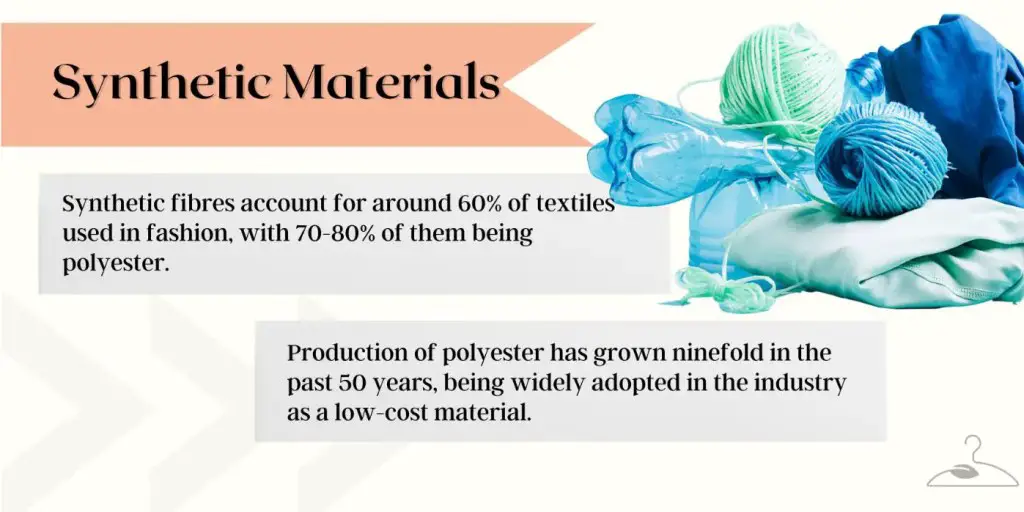
How to Avoid Toxic Clothing Materials: Simple Tips
The alarming findings on the toxic effects of fast fashion serve as a reminder of consumer responsibility. As the fashion industry remains unregulated, we, as consumers, should make informed choices about what we wear.
Given that, here are a few tips on how to avoid and combat toxic clothing materials:
Avoid synthetic textiles
There are a countless reasons to stay away from man-made fabrics, including their negative environmental impact, reliance on non-renewable resources, and non-biodegradability.
Opt for organic fabrics
Biodegradable and non-toxic, organic fabrics are durable, healthier, and more sustainable, meaning they can reduce your risk of exposure to toxic fabrics.
Choose sustainable brands
Support brands that promote organic clothing and sustainable fashion. Research the brand’s production practices and their sustainability initiatives to make conscious purchasing decisions.
Wash clothes before wearing
Washing new clothes before wearing ensures the removal of any residual chemicals and dyes, which might lower your exposure to harmful chemicals to a certain extent.
Avoid fabrics with unnatural features
Moreover, beware of the following properties in man-made textiles, as they may indicate a potential presence of harmful chemicals:
- Oil repellent
- Flame retardant
- Anti-slip
- Anti-static
- Anti-microbial
- UV protection
- Insect resistant

Conclusion
We hope that today’s post showed you the impact of toxic fabrics and the importance of making conscious choices when it comes to clothing materials.
By supporting sustainable brands, choosing natural and recycled materials, advocating for stricter regulations, and educating and sharing information with others, we can collectively make a significant difference.
Flame-retardant chemicals like polybrominated diphenyl ethers (PBDEs) are used in some fabrics, such as acrylic, to reduce their flammability. These chemicals have been linked to environmental pollution and potential health risks.
